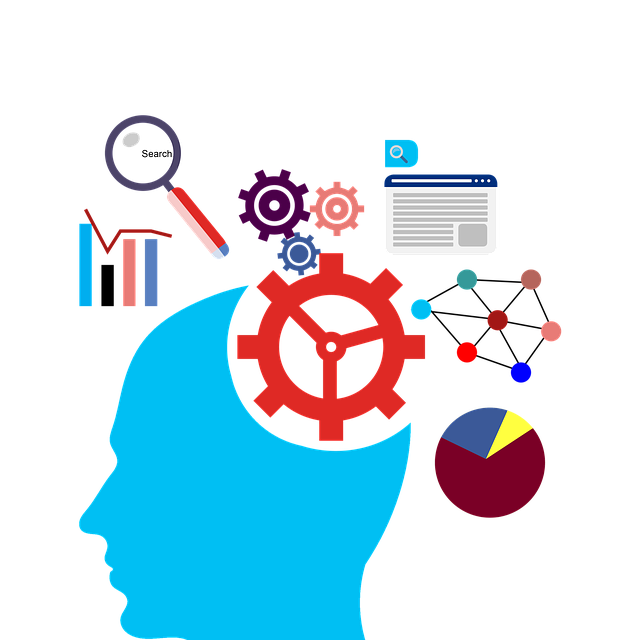Integrating AI-powered solutions into automotive shops enhances efficiency by automating tasks like inventory management and scheduling, freeing up technicians for complex repairs. AI enables data-driven decisions, optimizing workflows, reducing costs, and improving service quality. This leads to faster turnarounds, minimized errors, and enhanced customer satisfaction through accurate diagnoses. Implement AI training programs to fill skill gaps, using tailored tools and interactive learning methods; this ensures a seamless integration of AI into existing frameworks for optimal team performance.
In today’s digital era, AI-powered solutions are revolutionizing traditional automotive shops. This article explores the benefits of integrating AI into auto repair operations and provides a comprehensive guide on implementing effective AI training programs. From enhancing efficiency to optimizing team workflows, AI is transforming the way we approach vehicle maintenance. Discover advanced techniques that promise improved accuracy and faster turnaround times, making your shop a leader in the industry through smart, data-driven practices.
- Understanding the Benefits of AI Integration in Automotive Shops
- Implementing AI Training Programs: A Step-by-Step Guide
- Enhancing Auto Repair Efficiency with Advanced AI Techniques
Understanding the Benefits of AI Integration in Automotive Shops

Integrating AI into automotive shops brings a multitude of benefits, revolutionizing traditional practices and enhancing overall efficiency. By employing AI-powered solutions for auto repair team optimization, shops can streamline their operations significantly. These solutions can automate mundane tasks such as inventory management and scheduling, freeing up valuable time for technicians to focus on complex repairs and customer interactions.
Moreover, AI enables data-driven decision-making by providing insights into shop performance, parts usage, and technician productivity. This allows automotive professionals to optimize workflows, reduce costs, and improve service quality. With AI at their disposal, auto repair teams can deliver faster turnarounds, minimize errors, and enhance customer satisfaction through more accurate diagnoses and personalized recommendations.
Implementing AI Training Programs: A Step-by-Step Guide

Implementing AI Training Programs for your automotive shop is a strategic move towards optimizing your team’s performance through AI-powered solutions. Here’s a step-by-step guide to help you navigate this process effectively.
1. Assess Current Processes and Needs: Begin by evaluating your current training methods and identifying gaps. Understand specific skills or knowledge areas where AI could enhance learning outcomes, such as diagnostics, repair procedures, or safety protocols. This step is crucial in tailoring an AI curriculum that addresses genuine shop requirements.
2. Select Appropriate AI Tools and Platforms: Explore the market for AI solutions designed specifically for auto repair training. Look for platforms offering interactive simulations, virtual reality (VR) training modules, or adaptive learning algorithms. These tools can replicate real-world scenarios, allowing trainees to gain hands-on experience in a controlled environment.
3. Develop Customized Training Modules: Create content that aligns with your shop’s procedures and best practices. Incorporate AI features like intelligent question banks and personalized feedback mechanisms to ensure each trainee receives tailored instruction. This customization ensures the program resonates with your team, leading to better engagement and knowledge retention.
4. Integrate AI into Existing Training Frameworks: Seamlessly blend AI components into your existing training schedules and frameworks. Consider a phased implementation for smoother transition, allowing time for both staff and the system to adapt. Regularly update content to keep up with technological advancements and evolving industry standards.
5. Facilitate Interactive Learning: Encourage active participation through AI-driven activities and exercises. This could include virtual troubleshooting scenarios, diagnostics games, or collaborative learning platforms where trainees can discuss cases and share insights. Interactive elements foster a dynamic learning environment, promoting deeper understanding of AI-powered solutions for auto repair team optimization.
Enhancing Auto Repair Efficiency with Advanced AI Techniques

In today’s digital era, AI-powered solutions are revolutionizing various industries, and the automotive sector is no exception. Advanced AI techniques can significantly enhance auto repair efficiency by streamlining processes and optimizing team workflows. These innovative tools enable auto repair shops to improve productivity and reduce costs.
By implementing AI-driven systems, shops can automate repetitive tasks like diagnostic analysis, parts identification, and inventory management. This frees up valuable time for technicians who can then focus on more complex repairs. Furthermore, AI algorithms can predict maintenance needs based on vehicle data, allowing proactive servicing and extending the lifespan of vehicles. As a result, auto repair teams can work more efficiently, providing faster turnaround times and improved customer satisfaction.
